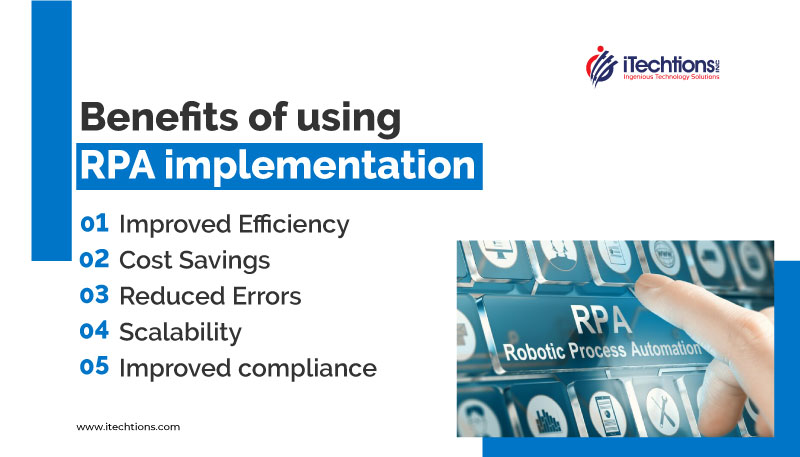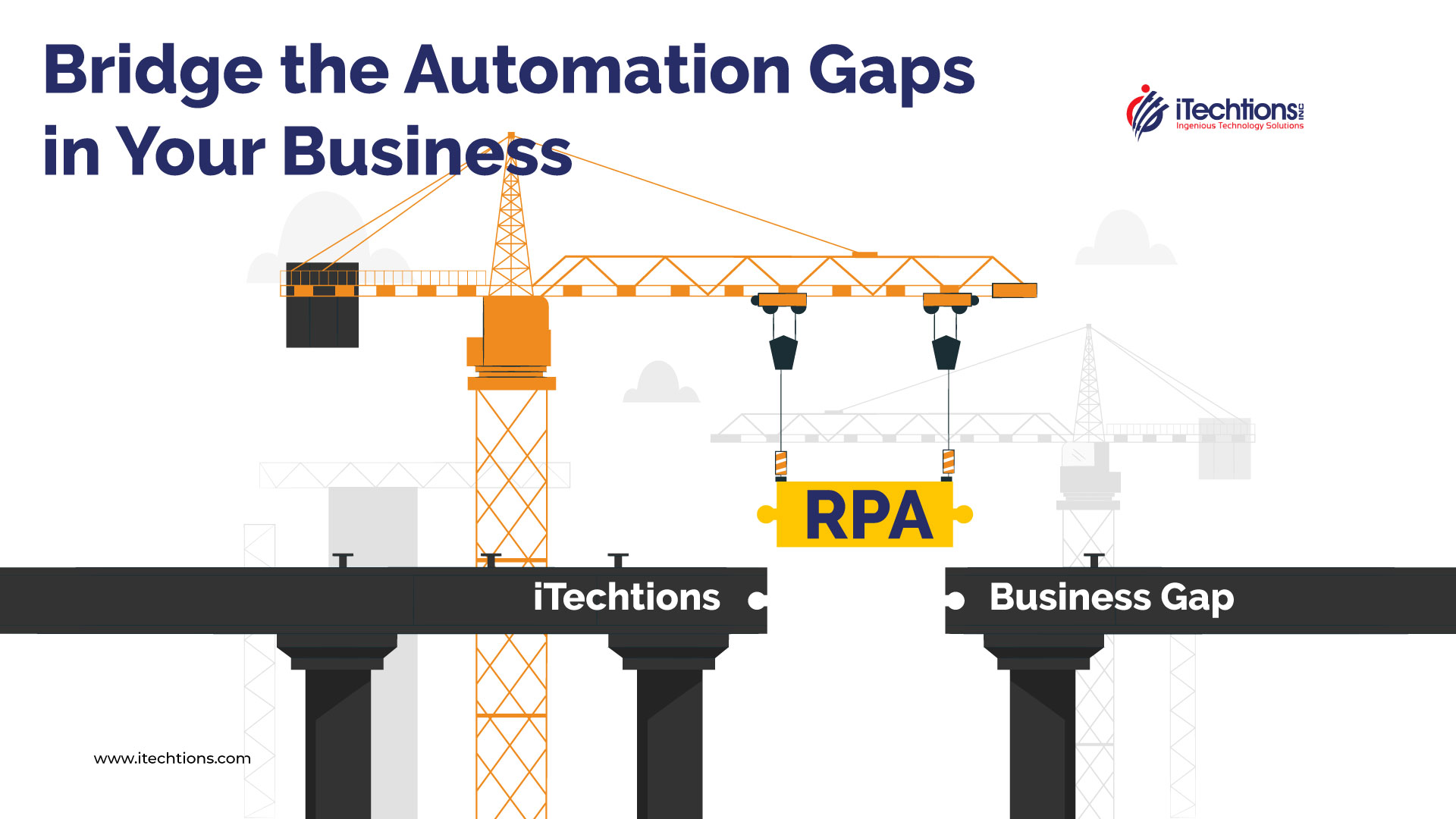In today’s rapidly changing digital landscape, businesses are increasingly seeking for ways to optimize their operations, increase efficiency, save costs, and boost productivity. In this case, robotic process automation, or RPA, is helpful. Organizations may automate monotonous and repetitive tasks with RPA, freeing up human resources for more valuable work.
Based on various data, the global robotics process automation market has been valued at around $1.30 billion in 2019 and could reach around $12 billion by 2027.
RPA is one of the best things you can do for your business operations, even though the benefits usually speak for themselves. However, significant consideration must be given to the implementation procedure and related problems. In this article, we’ll go over the principles of RPA installation and the essential steps you need to do to ensure success.
Common Challenges in the RPA Implementation Process
While Robotic Process Automation (RPA) implementation can bring significant benefits to organizations, it also presents some challenges that need to be addressed to ensure a successful implementation.
Here are some common challenges in the RPA implementation process

-
- Process complexity
Some business processes can be complex, with multiple systems, workflows, and decision points. Implementing RPA in such processes can be challenging as it requires a thorough understanding of the process and the ability to design bots that can handle exceptions and variations in the process flow.
-
- Integration issues
Integrating RPA with existing systems can be difficult, especially when the systems are outdated or have limited APIs. This can lead to delays in implementation and additional costs to develop custom integrations.
-
- Data security
RPA solutions may access sensitive data, which can pose a security risk if not handled properly. Organizations need to ensure that data privacy and security are maintained throughout the implementation process.
-
- Change management
RPA implementation can bring significant changes to an organization’s workflows and processes. Employees may need to adapt to new ways of working, which can cause resistance and delays in implementation.
-
- Scalability
RPA implementation may be successful in addressing the initial business process, but scalability can be a challenge if the implementation does not consider future growth and expansion.
-
- Performance Monitoring
Once the RPA solution is deployed, it is essential to monitor its performance and make improvements as needed. This can be a challenge if the organization does not have the resources or expertise to do so.
To overcome these challenges, organizations need to plan carefully, make a list of challenges, involve key stakeholders, and select the right RPA tools and partners. They need to provide appropriate training to employees and establish processes for monitoring and improving the RPA solution’s performance.
By addressing these challenges, organizations can achieve a successful RPA implementation and reap the benefits of improved efficiency, productivity, and cost savings.
Steps for a Successful RPA Implementation
Robotic Process Automation (RPA) is a powerful tool that can help businesses automate routine, repetitive tasks and streamline their operations. However, implementing RPA can be challenging and requires careful planning and execution.
Here are steps to follow for a successful RPA implementation
Steps for a Successful RPA Implementation
-
- Define the scope of the project & lists of processes to Automate
Start by identifying the business processes that are most suitable for automation. Define the scope of the project, including the number of processes to be automated, the expected benefits, and the timeline for implementation.
-
- Develop a business case and check Feasibility Assessment
Create a business case that clearly articulates the benefits of RPA implementation. This will help you gain buy-in from key stakeholders and secure funding for the project.
-
- Choose the right RPA tool
Select an RPA tool that is suitable for your organization’s needs. Look for a tool that is easy to use, has a good track record, and offers good customer support.
-
- Develop & Design the Automation process
Create a process flow and design the bots to automate the selected business processes. Make sure that the bots are designed to work with your existing systems and can handle exceptions.
-
- Test the RPA Solution
Test the RPA solution thoroughly to ensure that it meets the requirements and works as expected. This includes testing the bots on different systems and ensuring that they can handle exceptions.
-
- Deploy the RPA Solution
Deploy the RPA solution in your organization. Monitor its performance and make adjustments as needed.
-
- Continuously improve the Solution
Continuously monitor the RPA solution’s performance and make improvements as needed. This includes updating the bots, improving the process flow, and making changes to the solution based on feedback from users.
“Provide training to employees who will be working with the RPA solution. Make sure that they understand how the solution works and how to use it effectively”.
Benefits of Using RPA Implementation Technology

Nearly 77% of organizations have already built an RPA practice considering it a part of their digital transformation strategy.
Here are some of the Benefits of using RPA implementation Technology
-
- Improved Efficiency
RPA technology can automate routine and repetitive tasks, allowing employees to focus on more creative and value-added activities. This can lead to improved efficiency and productivity in the organization.
-
- Cost Savings
Automating tasks with RPA can reduce the need for manual labour, which can result in significant cost savings for organizations. Additionally, RPA can perform tasks faster and more accurately than humans, leading to further cost savings.
-
- Reduced Errors
RPA technology can perform tasks with high accuracy, reducing the risk of errors and improving data quality. This can lead to better decision-making and improved business outcomes.
-
- Scalability
RPA technology can be easily scaled to handle larger volumes of work without the need for additional resources. This makes it an ideal solution for organizations that need to manage high volumes of transactions or workloads.
-
- Improved compliance
RPA technology can help organizations comply with regulations and standards by automating processes and ensuring that they are consistently performed according to the rules.
What Processes Can RPA Automate?
The task such as routine processes running periodically (daily or weekly), high transaction volume, finance, manual HR tasks, repetitive IT tasks, processes that are rule-based, customer support, and many more.
-
- Client support
Customer expectations have become more demanding than ever before. And to keep them happy by interacting with them in real-time is necessary in this era. RPA can help you automate the process to connect with your customers.
Using RPA, you can automate each data validation linked with a client profile and collect the necessary data sets without requiring your personnel to switch between applications or make them search for information manually.
-
- Sales orders
RPA can automate operations like placing sales orders, invoicing, and more using client forms for any sales activity. RPA programs also assist in maintaining a clean database, enhancing customer service, and inspiring your sales team to produce greater outcomes.
-
- Recruiting
To automatically create and submit job offers, robotic automation is used. Additionally, if an employee account is created, automatic workflows are started. Businesses can employ electronic filing systems in place of paper copies to assist the HR team in reducing the volume of processed papers.
-
- Manual HR Processes
RPA helps to locate files and analyze employee invoices without human intervention. Processing day-to-day invoicing tasks and manual email sendings can be difficult and time-consuming. RPA makes it possible without the intervention of humans.
A Brief Working of RPA
RPA can help your business regardless to the industry you work in. It works by accessing data from your current IT systems and integrates with your present applications to automate tasks. The automation can connect to desktop programs, read and write data, or capture events from the user interface, and this can be done from the front end.
There are two types
-
- Programmable bots
Before a particular bot can begin to function, the programmers should decide the parameters because these define the rules that have been developed. It entails planning the procedure step-by-step and can take a lot longer for more complicated activities.
-
- Intelligent bots
These types examine both past and present data to see how workers are carrying out the operation. The robot keeps track of mouse clicks and actions. When it has had enough time to analyze the data, the bot will eventually finish the task on its own.
A Difference Between AI & RPA
These technologies don’t have to be used individually. Their dependability and performance will be essential for your business to run smoothly. But let’s understand when RPA and AI are necessary.
To automate complex processes, businesses can use AI+RPA to transform their business. Such as-
-
- Your workflows, such as your support calls, product settings, and other processes where you can’t foresee consequences in advance.
-
- AI is utilized for operations like purchase decisions, language translation, and operations that are quite distinct from one another and don’t follow a clear set of rules.
Utilise Streamlined Automation Solutions to Improve Testing
Technology for RPA implementation is a game-changer for companies trying to increase production and efficiency while reducing expenses. At iTechtions, we provide strong automation solutions that assist businesses in streamlining their software testing procedures so that software development teams may deliver software more rapidly, with fewer errors, and at a lower cost.
Bridge the Automation Gaps in Your Business
The weaknesses in your automated processes could become apparent when you employ RPA, the technology enables you to close the gaps and raise your level of competition in your industry.
All RPA development should start with a thorough understanding of current procedures and results. Without it, the likelihood of a successful ROI is greatly reduced.
RPA is increasingly helping IT teams and business leaders establish common ground and benefit by bridging the gap between short-term tactical decision-making and long-term technology planning.

If the preparation is done properly, RPA can offer significant benefits in any time period. Any technology that unites individuals is even better if it enhances business performance – that’s why we are here to help your business achieve maximum results by combining RPA and other advanced technologies. In this way, we believe both the workforce and automation can work to elevate your business far above what it is currently at.
Final Thoughts
Although implementing RPA is a continuous process for businesses embarking on a digital transformation. Over the years, interest in robots and the use of cognitive and artificial intelligence technology has grown rapidly. According to Deloitte’s third annual RPA Survey – Early adopters in shared services and other administrative organizations have already experienced significant benefits – thanks to Robotic Process Automation (RPA).









